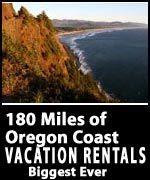Oregon / Washington Coast Aglow Above and Below: Meteors, Glowing Waves
Published 04/21/21 at 6:35 PM PDT
By Oregon Coast Beach Connection staff
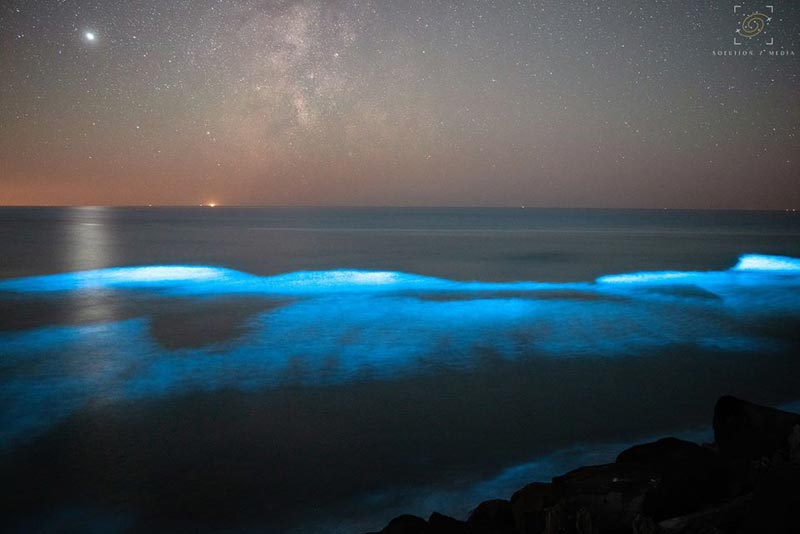
(Portland, Oregon) – You’d better jump to the coastline of the Northwest soon – or you’ll miss it. The Lyrid meteor showers are peaking right now above the Washington and Oregon beach towns, and there’s a run of glowing waves caused by bioluminescence. (Photo above: taken last year at Fort Stevens by Steven Smith / Solution 7 Media)
Includes exclusive listings; some specials in winter
In Cannon Beach:
Includes rentals not listed anywhere else
In Manzanita, Wheeler, Rockaway Beach:
Some specials for winter
In Pacific City, Oceanside:
Some specials for winter
In Lincoln City:
Some specials for winter
In Depoe Bay, Gleneden Beach:
Some specials for winter
In Newport:
Look for some specials
In Waldport
Some specials for winter
In Yachats, Florence
Some specials for winter
Southern Oregon Coast Hotels / Lodgings
Reedsport to Brookings, places to stay; winter deals
There have been sporadic reports of glowing waves along the Oregon coast for the last few weeks, and recently a big run of them has gotten plenty of notice up on the northern Washington coast. Since these dinoflagellates – the bioluminescent form of phytoplankton that causes this – are fair weather critters, that run of the right conditions is about to run out. Now is the time to look, but it's not guaranteed.
Meanwhile, in the skies above all of planet Earth, the Lyrid meteor showers will be peaking tonight and tomorrow. To top it off, Monday’s full moon will be a super moon. If you can see it with the current weather patterns is another matter, however.
Various photographs shared on social media have been popping up with brilliant captures of the glowing waves phenomena around the Oregon coast coastline, especially some from Cape Kiwanda. Likely not all are from recent weeks, but some appear to be captures from early April onwards – although periodic.
Up on the upper Washington coast, photographer Matt Nichols has been photographing a lot of the phenomena in recent days with some stunning results. You can see them on the Facebook group that he created talking about Pacific Northwest bioluminescence sightings.
Dinoflagellates are like fireflies: bioluminescent, meaning their “body” chemistry causes them to fire off a glow, according to Oregon scientist Sheanna Steingass (who is likely the northwest’s expert on them).
Their presence also creates the delight of “glowing sands,” where the wet sand at the tideline can give off tiny bluish sparks as you scuffle your feet.
How to see them? You have to have good weather for a start. Nichols says from his experience it takes a few days of nice Washington coast weather to spot them. You also need a very dark beach with no light, even from your cellphones. Let your eyes adjust.
Runs of nice days are a signal to keep looking, but it’s not a guarantee. One other big factor is in play, said Steingass, but it’s a difficult one to see on your own.
“Dinoflagellate and algal blooms happen during periods of heavy upwelling in which northerly winds cause upwelling of cold, nutrient rich water along the coast, making these nutrients available for primary producers,” she said. “So look for times when that cold wind blows heavily from the north, and for a few days/weeks thereafter.”
Weather along the Oregon and Washington coast is about to turn, starting Saturday. Rain always kills off these forms of phytoplankton. See the bioluminescent waves / sand article about Oregon / Washington coast for full tips on finding this
For the next night or four, keep looking up as well. They Lyrids are just hitting their stride, according to OMSI’s Jim Todd.
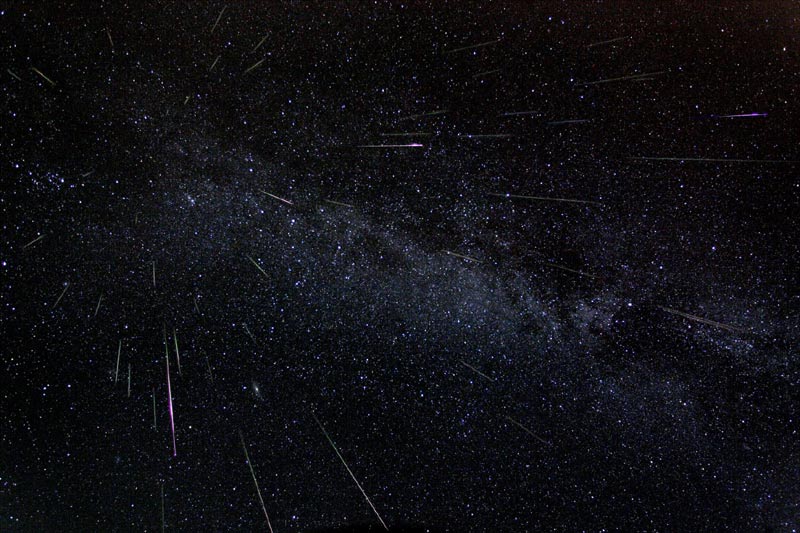
“Every year in late April earth passes through the dusty tail of Comet Thatcher (C/1861 G1), and the encounter causes a meteor shower: the Lyrids,” he said. “These meteors tend to be bright and often leave trails. About 10-20 meteors per hour at peak can be expected.”
Todd said about 10-20 meteors per hour at peak can be expected. On April 21 and 22, the moon will be 68% full. The Lyrids is visible from April 16 through April 30.
Oregon Coast Hotels for this event - South Coast Hotels - Where to eat - Maps - Virtual Tours
Cannon Beach Lodging
Nehalem Bay Lodgings
Manzanita Hotels, Lodging
Three Capes Lodging
Pacific City Hotels, Lodging
Lincoln City Lodging
Depoe Bay Lodging
Newport Lodging
Waldport Lodging
Yachats Lodging
Oregon Coast Vacation Rentals
Oregon Coast Lodging Specials
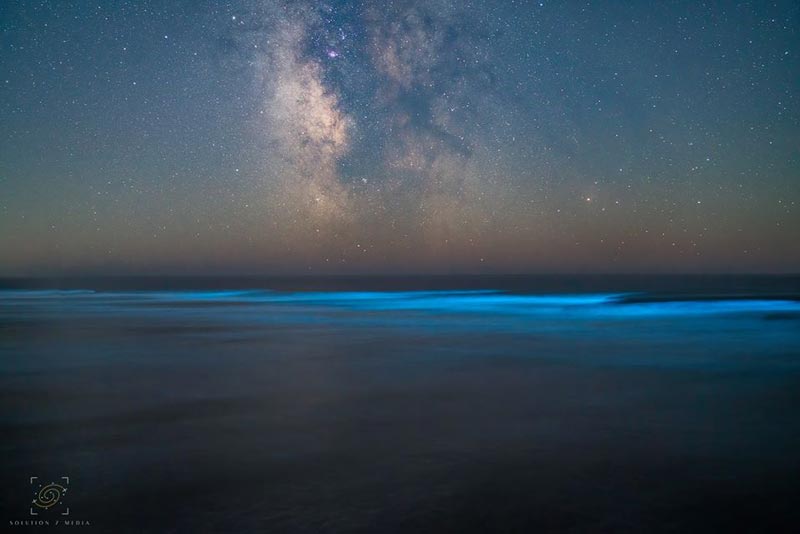
(Photo above: taken last year at Fort Stevens by Steven Smith / Solution 7 Media)
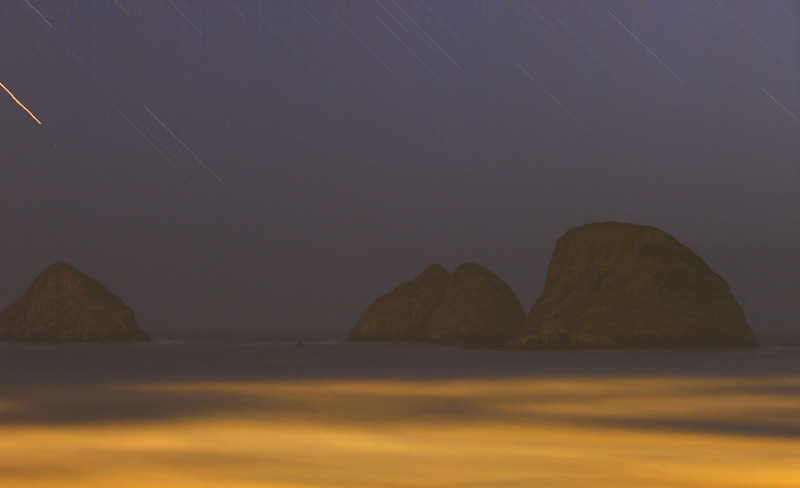
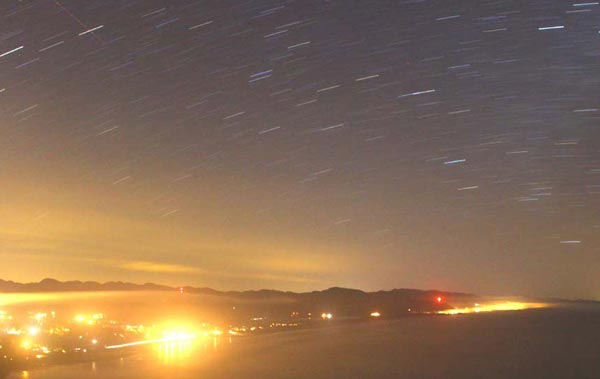
More About Oregon Coast hotels, lodging.....
More About Oregon Coast Restaurants, Dining.....
LATEST Related Oregon Coast Articles
A curious weather phenomenon that happens more out here
Curb, Road Construction Resumes in Lincoln City as Oregon Coast Season Begins...
Crews return Sept 15 with some dust and small delays. Traffi
NASA Announces First Evidence of Life on Mars in Possible Biosignature
In a former riverbed billions of years old, they found spots with interesting compounds. Astronomy
Portland, Oregon - Beaverton, Oregon Weather and Alerts | Current Conditions,...
Current weather conditions and alerts for Portland and Beaverton
Oregon Coast Scenic Railroad's Fame Engine Turns 100 Years Old with Special Runs
Sept 20 and 21 various special rides. Garibaldi events, Rockaway Beach events, Wheeler events
South Oregon Coast Goes Interstellar: Coos Bay's Sunset Bay Astronomy Fest Se...
Shore Acres State Park gets spacey. Coos Bay events
Swarm of 12 Quakes Fire Off 100 Miles from South Oregon Coast
After the initial 5.8, ranging in magnitude from 2.7 to 5.1: Coos Bay, Port Orford, Bandon, Gold Beach. Geology, weather
SOLVE Cleanup Happens Along Oregon Coast, Inland Sept 20 Through 28
SOLVE is inviting volunteers to take part. Brookings events, Gold Beach events, Port Orford events, Coos Bay events, Bandon events, Florence events, Yachats events, Newport events, Lincoln City events, Rockaway Beach events, Manzanita events, Cannon Beach events, Seaside events, Astoria events
Back to Oregon Coast
Contact Advertise on BeachConnection.net
All Content, unless otherwise attributed, copyright BeachConnection.net Unauthorized use or publication is not permitted


















































